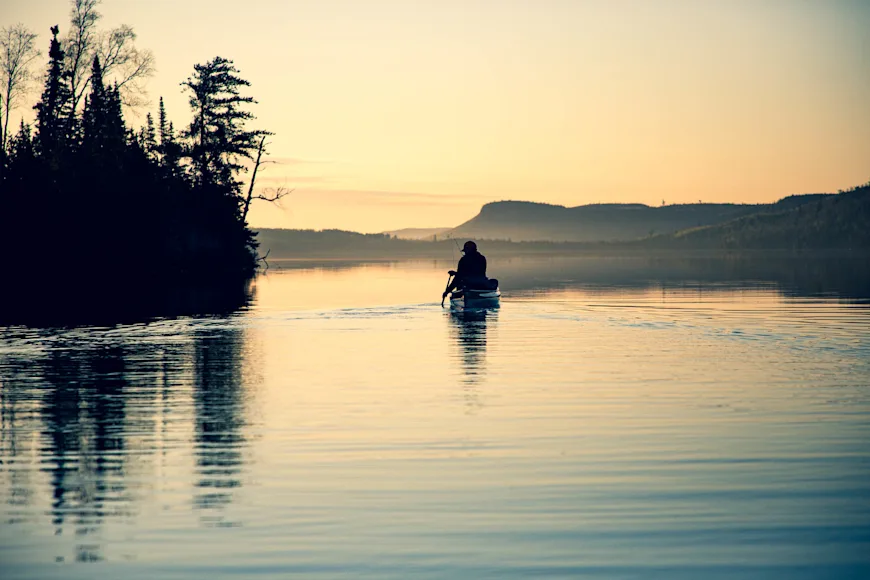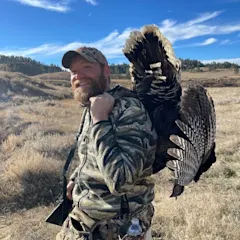Hunters and anglers celebrated last week after fierce public backlash forced members of Congress to strip a provision from the federal budget bill that would have sold or transferred more than half-a-million acres of public land in Utah and Nevada. With that victory behind them, conservationists and public land advocates are now focusing on a different fight. And it has big implications for the prized Boundary Waters Canoe Area of northern Minnesota.
The Boundary Waters Canoe Area Wilderness is a pristine boreal forest laced with interconnected streams, lakes, and wetlands. Accessible via 1,000 lakes, 2,000 campsites, and hundreds of miles of hiking trails, it is an angler's paradise known for trophy lake trout, walleye, smallmouth bass, and northern pike. The hunting is nearly as impressive as the fishing, providing a true wilderness experience to countless hunters in search of ruffed grouse, black bear, and legendary Northwoods whitetails. At 1.1 million acres, it's the most-visited wilderness area in the United States. But it also sits atop the world’s largest undeveloped copper-nickel deposit.

The Rainy River Watershed was given a 20-year moratorium on mining in 2023, when Deb Haaland was Secretary of the Interior, largely because the health of its ecosystem has immediate implications for the Boundary Waters. Now, just two years into the moratorium's 20-year term, the protections are in danger of being stripped away by members of Congress rushing to pass a controversial budget reconciliation bill before the 4th of July.
“This is a mirror of a House bill that Minnesota Representative Pete Stauber introduced earlier this year,” says Lukas Leaf, the executive director of Sportsmen for the Boundary Waters. “It would completely rescind the mining moratorium, which applies to 225,000 acres of public land in the Superior National Forest.”
By forbidding the judicial review, the provision would also block litigation that could stop harmful mining leases from being issued, Leaf says. “It took years of work to get this moratorium put in place,” he notes. “It only happened because there is broad public support for protecting the Boundary Waters. Outdoor recreators from across the spectrum want to save this place—not just for themselves but for future generations.”

The corporation that wants to mine the watershed is called Twin Metals. It’s a subsidiary of the Chilean mining conglomerate Antofagasta. According to Leaf, the foreign-owned mining company has been seeking permits for an extensive underground mine in the Rainy River Watershed for more than a decade. And those permits would quickly be awarded under the current stipulations of the so-called One Big Beautiful Bill Act.
“These types of copper-nickel mine operations cannot be successful without significant pollution in the form of acid mine drainage,” he says. “They’re usually done in dry, arid places like the desert Southwest, not in water-rich environments that are connected to lakes, rivers, and aquifers.”
Both the Boundary Waters and its Rainy River Watershed sit inside the three million-acre-Superior National Forest, which is one of the largest and most important sources of clean water in the United States, Leaf says. “It’s a relatively small fraction of the 193-million acre U.S. Forest system, but it holds up to 20 percent of all the fresh water on USFS-protected lands,” he says. “It’s only because of that clean water that we enjoy world class fishing, hunting, hiking, camping, and paddling in the Boundary Waters.
Read Next: NOAA Cuts Threaten Critical Salmon and Steelhead Restoration Work
Like the wildly unpopular public land sell-off, the push to remove hard-earned protections from the Boundary Waters could be stripped from the larger budget bill, Leaf says. But it'll require a similar level of public pushback. “If this isn’t stripped from the Senate version of the budget bill, the Boundary Waters are in big trouble,” he says. “No matter where you live, if you want to see this stopped, call your senators. Call the US Capitol switch board. Tell them this is one of the most pristine landscapes left in the Lower 48, and you want these protections to remain intact.”


